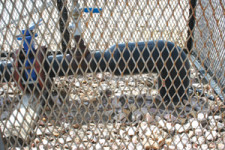Setting Up A Security S.O.P.

Originally published: May 2008
Although dealership security and safety is a serious matter, that doesn’t mean it has to be without a certain basic charm. According to J. Billy Pirkle, director, environmental, health & safety for Agrium US, Inc., Collinsville, IL, retailers in many cases can effectively establish a comprehensive dealership security protocol by simply following their A-B-Cs.
“It’s not too hard to use the letters of the alphabet to set up a great security and safety system in place at the retail level,” says Pirkle. “It’s just a matter of coming up with some basic plans and then putting them into action. Once that’s done, the dealership can be much more secure in the knowledge that it is on its way to establishing overall dealership security.”
Here we will look at some of these A-B-C procedures and how they might be able to help retailers with their dealership security needs.
1. Assess Points Of Vulnerability
The first step toward effective dealership security and safety is to conduct a vulnerability assessment. In this way, a retailer can determine what parts of his or her facility are potential targets for unwanted intrusion, which parts of the outlet are hard to monitor, and what preventative measures should be considered to safeguard all of the outlet’s assets from theft. According to Tom Zornes, office manager for The McGregor Co., Oakesdale, WA, this is how his company established what safety equipment to have on-site and where it should be placed for maximum access to employees.
2. Be Thorough In Safety And Protection
The second step once the access is complete is to consider all the ways your dealership can protect its employees and assets from harm. At McGregor Oakesdale, says Zornes, the outlet’s safety and security is closely monitored by a Safety Officer, who conducts monthly safety classes.
“Besides surveillance during business hours, we have installed pole lights which cover our entire area,” he says. “Since their installation, we have not had any cases of vandalism or theft.”
3. Consider All Options
While vulnerability assessments are good at determining obvious places and parts of the ag retailer that need defending, retailers should also consider less common parts of their operation for security or safety precautions. In fact, as a rule, the further away from the main facility something is, the more likely it is to need some form of security.
4. Do Regular Effectiveness Checks
Once an ag retailer has put its security and safety procedures into action, they should conduct semi-regular checks to make certain these systems are working as they should.
“We contract the services of an outside safety and compliance officer who conducts bi-annual audits of our facility and operations to ensure that we are prepared to meet any emergency situation,” says Scott Firlus, agronomy manager for Wisconsin River Agronomy, LLC, Adams, WI.






